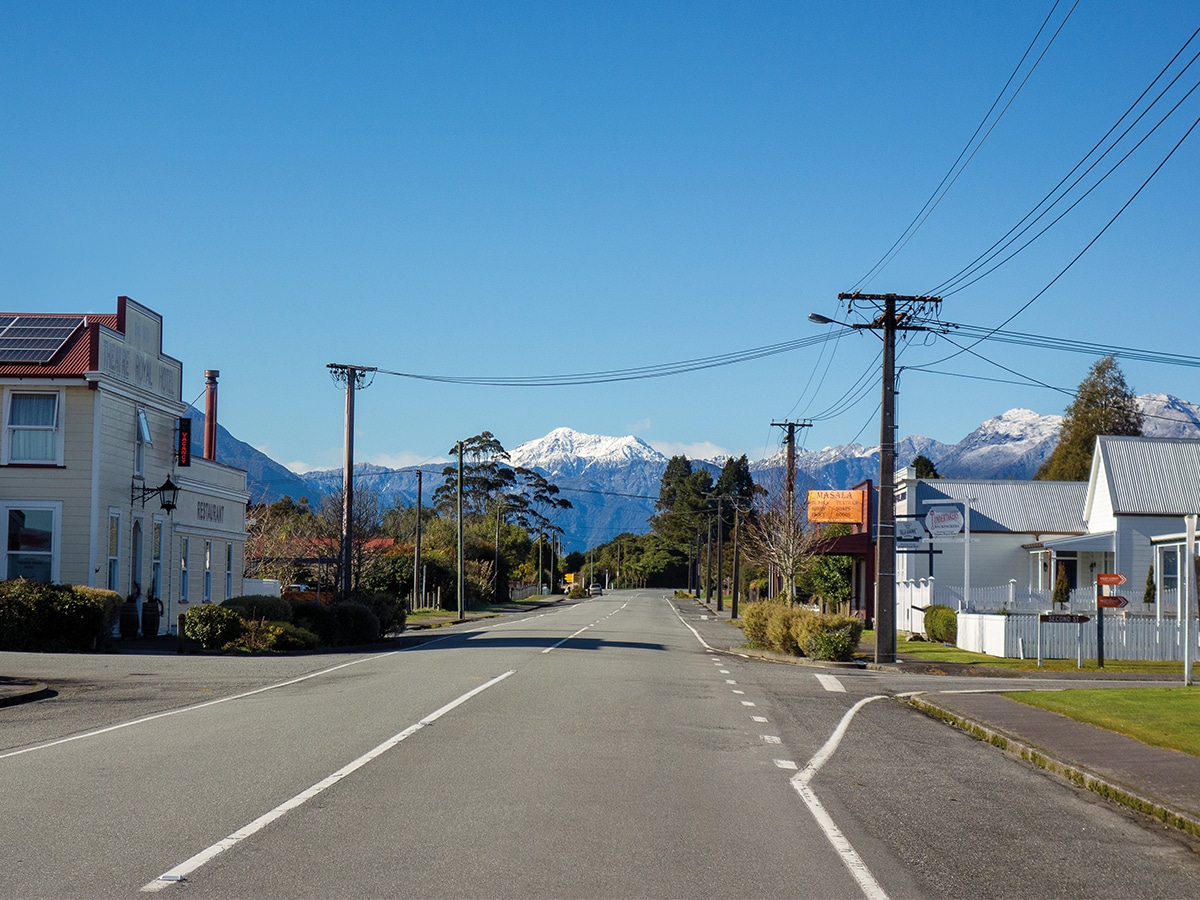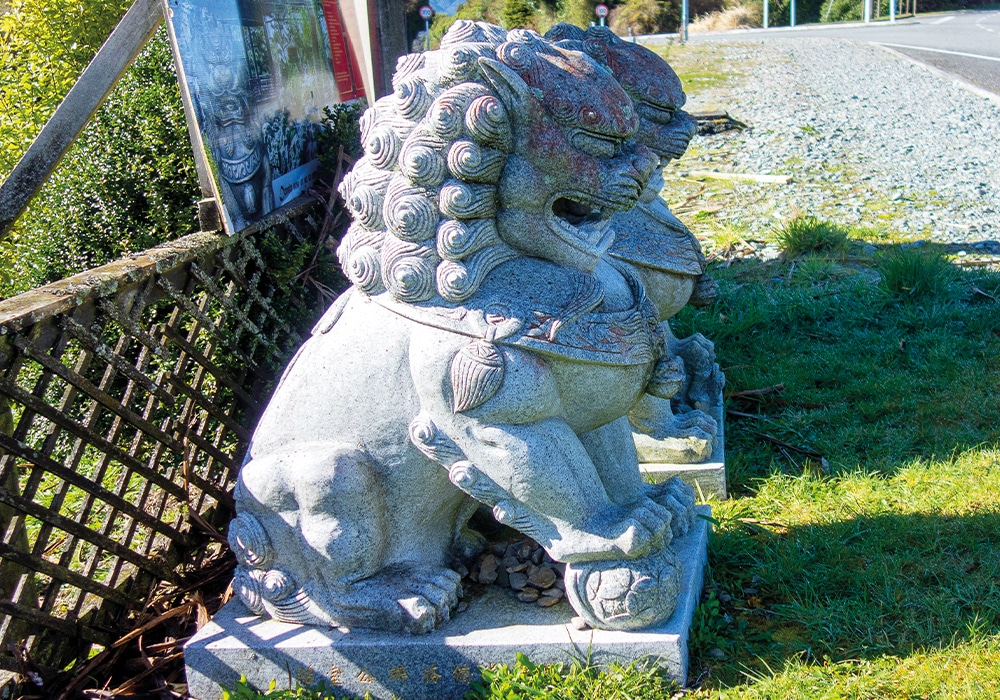Paul Owen discovers a near-forgotten town that’s enjoying a new lease of life as host town to RVers and cyclists from across the world.
Kumara, the small town located between the junction of the same name and Arthur’s Pass, was the scene of New Zealand’s last big gold rush in the 1870s-1900s but has mostly been in decline since those early days of feverish growth. However, the opening of the West Coast Wilderness Trail for cyclists seven years ago has put the town back on map for tourists. It makes a natural overnight stop for anyone riding the trail after catching a ride from Christchurch to Greymouth on the popular TranzAlpine Express.
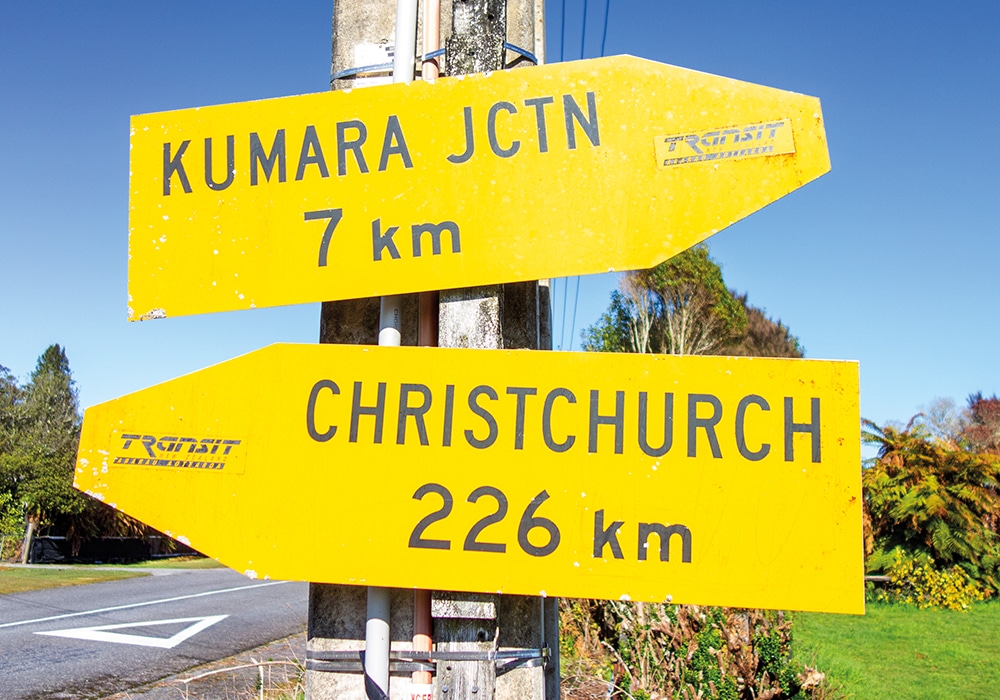
It’s an easy 29km ride from Greymouth station to Kumara along the first section of the trail. The location of the town is in perfect sync with the arrival of the train at the station a little after midday, meaning the riders generally arrive at Kumara in the late afternoon, keen to find a hot shower, dinner, and a bed for the night. A growing number of hospitality businesses are therefore being established in the town to cater for bicycle tourists. Although the growth is far from the heady days of the late 19th century, when 47 hotels competed for customers in Kumara, a number of the town’s vacated lots now have new buildings being erected on them.
Already in operation are the beautifully restored and expanded Theatre Royal Hotel (est. 1876), the quirky Undertakers Backpackers, and Greenstone Retreat, which is both a holiday park and gathering place for those interested in yoga and other healthy pursuits. All three have played a part in the rich history of the town, Greenstone Retreat most recently when owner/operator, Kate Hawkins, found a large lump of pounamu on her land while digging the foundations for further campground facilities. As history records, the finding of treasure in the ground below or near the town is what made Kumara famous, while not finding it also made a fool of many.
It all started back in 1874 when two down-on-their-luck gold prospectors, Dick Cashman and James Connor, decided to give up looking for the precious metal and take up moonshining instead. The pair carted their illicit still up the Taramakau River, then turned up a side creek and followed it deep into the bush so that the smoke from their small distillery fire would go unnoticed. When they began to excavate the chosen ground to create a platform for their still, they suddenly found to their incredulous joy that the gravel they were shoveling was full of coarse gold nuggets.
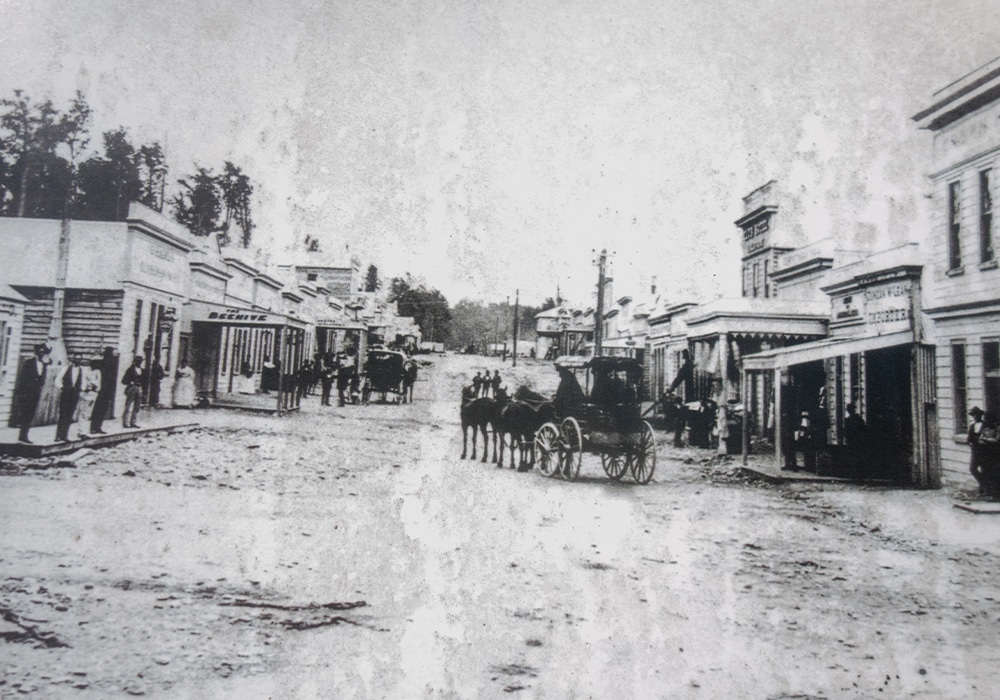
Cashman and Connor managed to keep the location of the gold to themselves for a couple of years. The March 6, 1877, edition of the Grey River Argus newspaper reports that “being quiet, sensitive, and reticent men they kept their own counsel and didn’t ‘blow’ about what they were doing.”
There were several attempts made to follow the men on their frequent expeditions up into the Taramakau watershed, however these were thwarted for quite some time when Cashman and Connor would lead the followers away from the site. Their diggings were finally discovered in 1876, and what had started as a two-man gold rush quickly became a human tidal wave. Two towns were erected within months on either side of the initial gold field, Kumara and Dillmanstown, each quickly expanding in population and number of pubs.
In just a single year, Kumara had accrued a population of more than 4000 residents. It was to be the second-to-last gold rush on the West Coast; a less lucrative goldfield was found at Rimu in 1882.
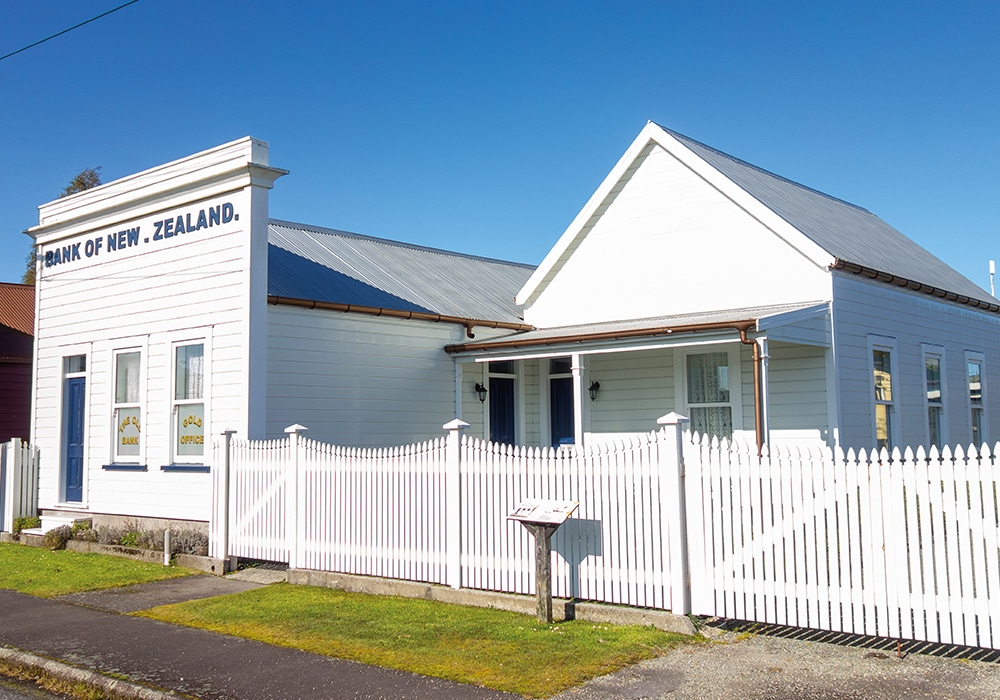
King Dick’s Town
Among those rushing to Kumara was a Lancastershire-born storekeeper from nearby Waimea. Richard John Seddon had uprooted his young family to move to Kumara, where he quickly staked a claim and erected the Queens Hotel. Within a year, Seddon had become Kumara’s first mayor in 1877. It was the start of a successful political career that would culminate with him becoming New Zealand’s longest serving premier with 13 years in the office from 1893 until 1906. A populist and an anti-elitist, Seddon was probably New Zealand’s most influential politician and one of the country’s most popular. This despite his vehement resistance towards granting voting rights to women, the racism he displayed towards Chinese miners, his complicity in the wide-ranging Māori land deprivation policies implemented by his ministers of native affairs, and an imperialist foreign policy which saw New Zealand annex the Cook Islands and attempt to do the same to Fiji under his watch. Coasters loved the big bloke from Kumara. Seddon would live in the town for more than two decades before spending his last 13 years domiciled in-house at parliament in Wellington. Historian, John Beaglehole, explains the attraction:
“Powerful in body and voice, forceful, tireless, shrewd in his appreciation of men, a good administrator, and a consummate politician, astute without being subtle, unable to tolerate equals around him, able to not merely jump on a bandwagon but to make the bandwagon his, with a rough geniality that went straight to the heart of the electorate, it was little wonder that long before his death he was known as ‘King Dick’.”
One of Seddon’s final acts was to coin the phrase ‘God’s Own Country’ in a final telegraph before his death on board a steamship crossing the Tasman Sea. He is buried in Wellington’s Bolton Street cemetery and there is a statue of him at the gates to Parliament. Kumara remembers him with its own memorial, and in an ironic twist of a future never envisaged by the man, a park dedicated to Chinese miners is currently being constructed some 20 metres away on the opposite side of the road.
It’s hard not to think of the once- powerful British-born premier who was determined to turn New Zealand into ‘another Britannia’ during his rule as you enter the Theatre Royal Hotel 116 years after his death. Seddon was frequently a visitor here as it was not just a pub, but a complex also containing a dance hall and a theatre. It was one of the beacons that attracted the miners like moths to a flame to the town when their daily toil was over. Moana Tracy captures the scene in her book, West Coast Yesterdays:
“When the last embers of the sunset over the Tasman Sea had smouldered down to ash grey and the Westland world was softly falling to darkness, the people of Kumara, the old town, would hear the diggers tramping in, afar at first, then nearer, until the sound was like that of an army on the march.”
The Theatre Royal Hotel was also one of the most clandestine brothels ever erected next to a goldfield. The original licence-holders from Sweden and Germany respectively, Otto and Annie Anderson, frequently held dances there, and charged two shillings and sixpence to provide partners for the miners. A sound-proofed room upstairs created a place where miners could engage with the women in a more meaningful manner after paying more.
The Andersons lived beneath the stage of the theatre, accessed through a secret stairway. They also staged the several performances of travelling opera companies, and there was even a visit by the London Circus in 1887, when the theatre proved to be large enough to accommodate the shooting of a boy from a cannon. The sell-out crowd were also entertained by contortionists, trapeze acrobats, and performances of trained exotic animals.

Another performer in the theatre was the Dunedin poet, Thomas Bracken, who’s greatest legacy is that he composed the lyrics to our national anthem, ‘God Defend New Zealand’. It’s possibly an old miner’s tale that Seddon encouraged his young friend to write the anthem during one of the latter’s frequent visits to Kumara, perhaps during a conversation inside the theatre. The premier would later present the finished anthem to Queen Victoria in celebration of her Diamond Jubilee.
Undertakers
Undertakers Backpackers, also operated by the nearby Theatre Royal Hotel owners, Kerrie and Mark Fitzgibbon, uses the restored building of Kumara’s original highly respected undertaker from Denmark, Henry Johnsen. One of Johnsen’s more memorable funerals was when he had to borrow a black horse from the brewery in the town because his own had gone lame. As usual, Johnsen led the procession with his head respectfully bowed. However, as he approached the cemetery, he could no longer hear the sound of hooves behind him. He turned around to find to his dismay that the whole procession had disappeared. Seems the horse preferred the brewery to be the final location for the journey and had led the procession there. Johnsen discovered the mourners had brought the coffin into the bar, and were vigorously toasting the memory of the deceased there. A good time was had by all.

Next to the backpackers you’ll find the former drapery of Kumara’s own Santa Claus, Phil Duffy, now named Marsala and evidently a drop-in centre for witches (parking ‘violators will be toad’). In the lead up to Christmas during the 1960s and 1970s, the travelling haberdashery man would bring his tame deer, Jim, along and a ‘sleigh’ with wheels under the skids. The children from mining towns all over the West Coast would then enjoy rides in the sleigh hauled by Jim, with Duffy impersonating the big guy in red from the North Pole.
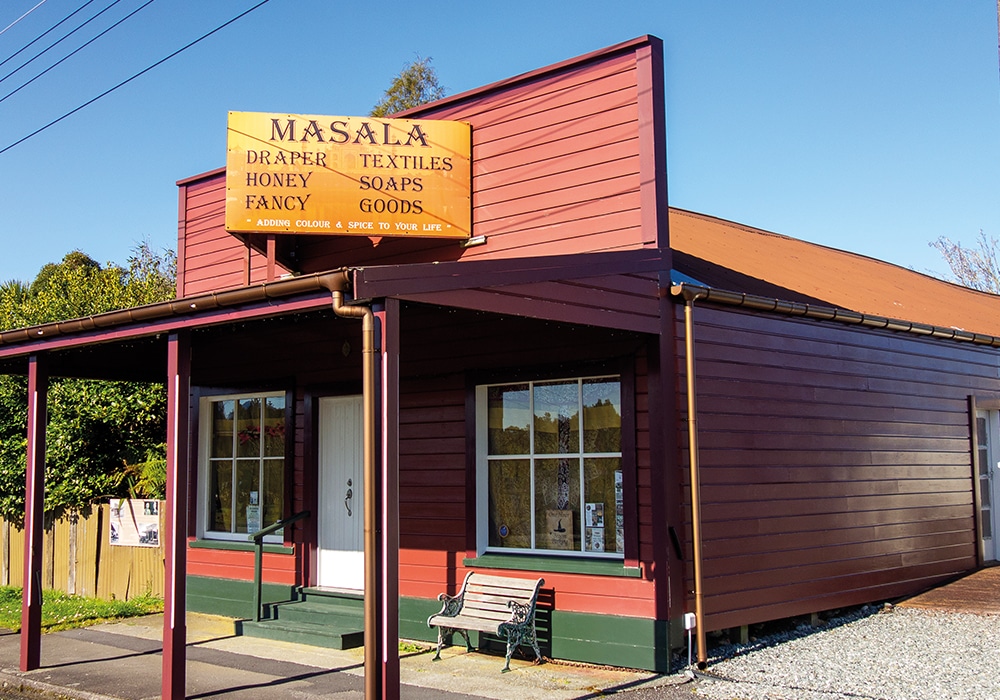
Just outside the town are places worth a look. To the west is the Kumara Racing Club, established in 1887, and the location of the annual horse racing carnival held each year in January. To the east is the historic ruins of the town’s huge swimming pool, which quickly attracted a less flattering label – ‘the frog pond’. At Dillmanstown, you’ll find the turnoff to the Kapitea Reservoir, a large lake of azure fresh water framed by ranges of snow-capped mountains.
“It’s my favourite place to stop for a break in the whole country,” says sawmill technician, Chris Spencer, when we meet him there. His trusty Toyota Hilux is just about ‘once round the clock’ after traveling more than 800,000km, visiting sawmills in both islands.
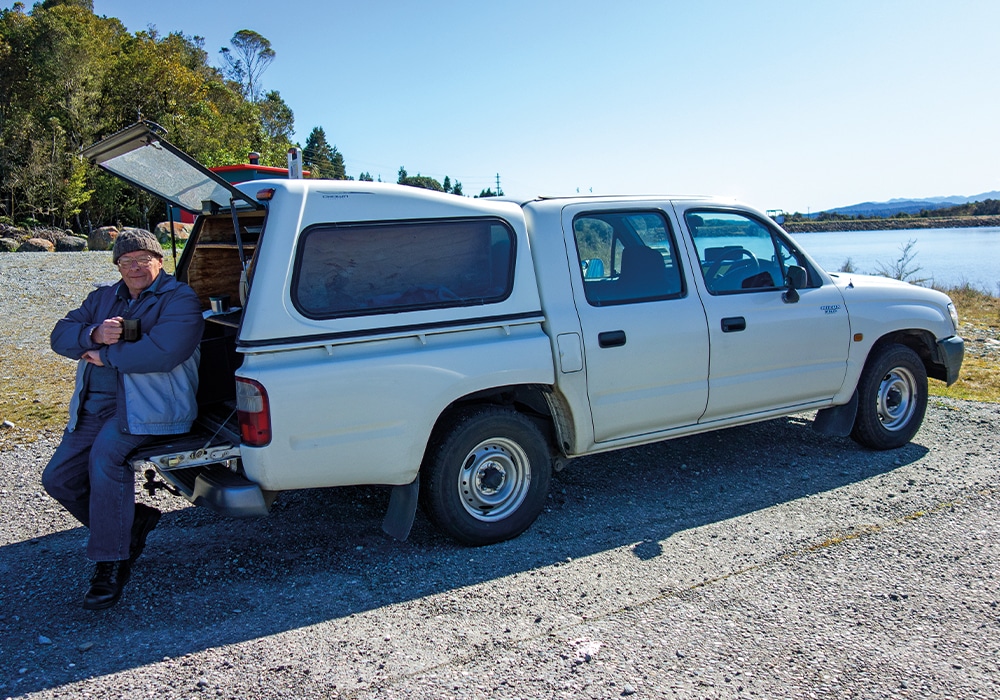
Throughout the 20th century, Kumara began to decline in parallel with the fortunes of those working the gold claims. As this was one of the last gold rushes in New Zealand, the miners were faced with two alternatives – continue to search for gold in Alaska and elsewhere offshore or stay in Kumara. Quite a few chose the latter, sustained by working at the town’s then-busy sawmill or on the huge Kaniere gold dredge that would operate until the 1960s. By beginning of the 21st century however, the town was on its knees, the official population hovering at around 100 residents. That number has now grown to three times as many, proof that there’s gold in bicycle tourism.
Where to camp
• Enjoy some sheltered and secluded camping at Goldsborough Campsite. This sheltered and secluded campsite is the site of an old gold mining town. Explore the gold mining area and try your luck fossicking in the nearby creek. Visit, doc.govt.nz/parks-and-recreation/places-to-go/west-coast/ places/goldsborough-waimea-kumara-area for more.
• Greenstone Retreat is a wellness retreat containing a small campground with four level powered sites and
four non-powered sites. Visit, greenstoneretreat.nz for more.
• Self-contained vehicles can freedom camp at Kumara Power Station.


